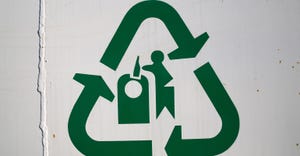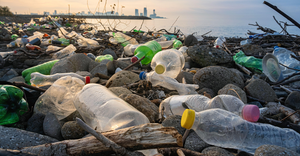Where there have been stumbles, however, is taking promising technologies and upscaling them into commercial-scale projects.
The word “combustion” has conjured images among environmentalists and the public of stacks belching black smoke, threatening human and environmental health. So as waste-to-energy (WTE) technologies began advancing, the trash industry coined the term “conversion technology,” trying to change that mindset.
One conversion technology category is thermal conversion, using heat, with or without oxygen, to turn biomass into energy, like liquid fuels and chemical feedstocks. Included are pyrolysis, gasification and combustion. These methods tend to produce fewer emissions while converting trash into usable energy.
Where there have been stumbles, however, is taking promising technologies and upscaling them into commercial-scale projects. But a few companies say they have working models, with Cleveland-based Vadxx Energy among them.
The company turns plastic waste into diesel fuel through pyrolysis. The U.S. Department of Energy reports that using pyrolysis to convert plastics into ultra-low-sulfur diesel (ULSD) cuts greenhouse gas emissions up to 14 percent and traditional energy consumption by 96 percent compared to ULSD made from crude oil.
“We started with lab-scale equipment we built, then purchased standard petroleum production equipment. This allowed us to configure rather than invent from scratch,” says Tony Colello, director of operations excellence at Vadxx Energy.
Vadxx’s process entails exposing plastics to high-heat energy in a 80-ft.-long kiln with a combustion chamber. The company vaporizes it and condenses it back to petroleum products.
It targets local diesel markets. So far Vadxx has supplied 14,000 gallons of fuel. The company can currently process 25,000 tons of plastic a year into 60,000 barrels of diesel.
“There will always be plastic that cannot be recycled or separated cost effectively, so it is landfilled. We will put it to use, and when we are done with it, it’s gone. Even char residue is burned as a fuel,” says Colello.
Vadxx produces three cuts of synthetic fuel. One is a diesel blend. Another is a gasoline blend stock or solvent blend stock. The third is used in the lubes and waxes industry.
Other companies have attempted to go full scale using plastics to make fuels but have met challenges, including in securing the right feedstock and outlets for products.
“And from a technical standpoint it’s getting all unit operations to function together,” Colello says. “It takes a lot of automation control. Key is understanding applications of instruments in the environment where it will be used. It takes understanding of process requirements in unchartered territory.”
While Europe and Asia are making some progress, driven largely by limited landfill space and high tipping fees, in the U.S. it’s catching on more slowly. Companies have shut down due to technological and economic barriers, says Bruce Clark, project director at Sacramento, Calif-bas. SCS Engineers.
California once sponsored a program to award companies to demonstrate technologies, though it did not move forward, says Clark. This was a blow to the industry as the state was somewhat more receptive to these alternative technologies than many regions, he adds.
To fully take off, conversion technologies must compete in areas where landfill tip fees are lower. And due to design challenges, gasification and pyrolysis plants particularly are hard pressed to satisfy waste output in populated areas.
One potential is for these kinds of plants to catch on at military facilities, Clark says.
“The military runs these plants in isolated places to try and become energy dependent,” he says. “They have their own chain of command and can try thermal. Maybe these are good proving grounds to someday scale up to serve cities.”
Still, alternative thermal technologies are popping up in some places.
“Some look at the MSW stream and endless supply of feedstock that we produce and then throw away,” Clark says. “They say if we could better utilize it we could make it work economically … But [in the U.S. especially] it’s a difficult slog. It’s a slow battle with forward and back steps.”
But he points to Covanta as one of a few domestic success stories; its quasi-gasification and combustion process to convert solid waste to energy.
“And [Montreal-based] Enerkem has seen substantial success in thermal-based technology. So there’s a pulse for this. It’s not dead.”
About the Author(s)
You May Also Like




